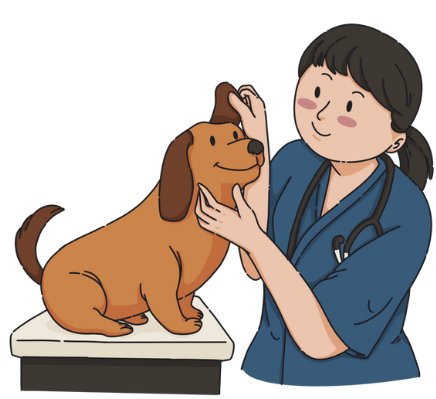Introduction
Tick protection for dogs is not just a seasonal concern; it’s a year-round responsibility. As a pet owner, ensuring your furry companion stays safe from these tiny yet dangerous parasites is paramount. Ticks can transmit severe diseases like Lyme disease and Rocky Mountain spotted fever, making prevention essential.
In this article, you’ll learn effective strategies to ensure your dog receives the best tick protection available. From understanding ticks and their threats to choosing the right prevention products and maintaining a tick-free environment, we’ve got you covered.
Understanding Ticks and Their Threats
Ticks are more than just a nuisance; they pose serious health risks to your pets. Familiarizing yourself with the types of ticks and the diseases they carry is the first step in prevention.
Choosing the Right Prevention Products
With numerous tick prevention products available in the market, selecting the right one can be overwhelming. It’s crucial to consult with a veterinarian who can recommend suitable options based on your dog’s health and lifestyle.
If you’re unsure about which product to choose or how to administer it, book a visit with our expert veterinarians who can provide personalized advice.
Maintaining a Tick-Free Environment
Preventive measures should not only be limited to your dog but should also extend to their living environment. Regular cleaning, yard maintenance, and using tick repellents in your home are vital steps in maintaining a tick-free zone.
Vaccination as a Preventive Measure
While tick prevention products are essential, pet vaccines can also play a significant role in protecting your dog from tick-borne diseases. Discuss with your vet about the necessary vaccinations that can help safeguard your pet’s health.
Understanding Ticks and Their Threats to Dogs
Ticks are small, blood-sucking parasites that can cause significant health issues for dogs. They thrive in environments with dense vegetation, such as forests, grasslands, and even urban parks. These pests are most active during warmer months but can pose a threat year-round in some regions.
The Life Cycle of Ticks
Ticks undergo four stages in their life cycle:
- Egg
- Larva
- Nymph
- Adult
Each stage requires a blood meal from a host to progress to the next stage. This need makes dogs prime targets for ticks at various points in their lifecycle.
Common Tick Diseases
Ticks are notorious for transmitting several diseases to dogs:
- Lyme Disease: Caused by the bacterium Borrelia burgdorferi, Lyme disease can lead to symptoms like fever, lethargy, loss of appetite, and joint swelling.
- Anaplasmosis: This bacterial infection can result in fever, joint pain, and neurological issues.
- Rocky Mountain Spotted Fever: Another serious condition that can cause symptoms such as fever, skin lesions, and potential organ damage.
Seasonal and Regional Factors
Tick prevalence varies significantly based on seasonal and regional factors:
Seasonal Prevalence
Ticks are generally more active during the spring and summer months when temperatures rise. However, in milder climates or during unseasonably warm winters, they may remain active throughout the year.
Regional Variation
Different regions have varying tick species and associated risks. For instance:
- The Northeast United States is notorious for Lyme disease due to high populations of Ixodes scapularis (black-legged ticks).
- The Southeast sees a higher prevalence of Amblyomma americanum (lone star ticks), which can transmit ehrlichiosis.
Understanding these factors helps pet owners stay vigilant about tick prevention methods.
By being aware of the life cycles and habitats of ticks and recognizing the diseases they carry, dog owners can better prepare to protect their furry friends from these persistent pests.
However, it’s not just ticks that pose a threat to your dog’s health. Regular dental care is also crucial for maintaining your dog’s overall well-being.
If you notice any dental issues or if your pet requires emergency care due to tick-related illnesses or other health concerns, don’t hesitate to reach out to an emergency vet in La Jolla or schedule a dental care appointment at one of our Scripps Ranch locations.
Essential Tick Prevention Products for Dogs
Protecting your dog from ticks involves choosing the right prevention products tailored to their needs. Several options are available, each with its own advantages:
Flea and Tick Collars
Flea and tick collars are a popular choice for many dog owners. These collars release chemicals that repel or kill ticks. They offer long-lasting protection, often up to eight months, making them convenient for pet owners. Brands like Seresto have been highly rated for their effectiveness.
- Pros: Long-lasting, easy to use
- Cons: May cause skin irritation in some dogs
Topical Treatments
Topical treatments, also known as spot-on treatments, are applied directly to the dog’s skin. These products spread through the skin’s oils, killing ticks upon contact. Brands such as Frontline Plus and Advantix II are well-regarded in this category.
- Pros: Immediate effect, often provides month-long protection
- Cons: Messy application, potential for localized reactions
Oral Medications
Oral medications like NexGard and Bravecto provide systemic protection by killing ticks once they bite. These chews are easy to administer and can offer protection for up to three months.
- Pros: Easy administration, no mess
- Cons: Requires prescription, potential gastrointestinal side effects
Comparing Effectiveness
Recent studies suggest that oral medications might be more effective in areas with high tick infestations due to their systemic nature.
However, flea and tick collars offer prolonged protection without monthly applications. It’s crucial to consult with your veterinarian to determine the best product based on your dog’s lifestyle and health condition.
Choosing the right product ensures your dog stays protected year-round. For more insights on protecting your furry friend, visit our service page.
Additionally, if you’re considering a career in veterinary services or need information about specific procedures like soft tissue surgery, we offer valuable resources on those topics as well. If you’re located in La Jolla and seeking local veterinary services, our La Jolla location is ready to assist you.
Choosing the Right Tick Prevention Product for Your Dog
Selecting veterinary-approved products tailored specifically for dogs ensures both their safety and the effectiveness of tick prevention. Dog-specific treatments are formulated with ingredients that are safe and tested for canines, minimizing potential side effects.
Risks emerge when using medications intended for other pets, particularly cats. Cat medications can contain substances that are toxic to dogs, leading to adverse reactions or even severe health issues. Always check labels and consult with your veterinarian before administering any treatment.
Key Points:
- Consultation: Always seek advice from your vet when choosing tick prevention products.
- Read Labels: Ensure the product is dog-specific and avoid using cat medications.
- Safety First: Use products that have been tested and approved for canine use to prevent unwanted side effects.
Ensuring your dog receives the best tick protection starts with informed choices about their preventive care. Keeping these considerations in mind helps maintain your dog’s health and well-being.
The Importance of Regular Inspections: Checking Your Dog for Ticks
Checking your dog daily is crucial for finding ticks early. By inspecting your furry friend regularly, you can catch these pesky parasites before they have a chance to attach and feed. This proactive approach significantly reduces the risk of tick-borne diseases like Lyme disease.
Key Areas to Check
When inspecting your dog, pay special attention to these areas:
- Neck: Ticks often hide in the folds of skin around the neck.
- Ears: Both inside and around the ears are common hiding spots.
- Between Toes: Ticks love to nestle between your dog’s toes.
- Under Collars and Harnesses: These areas are often overlooked but can be prime locations for ticks.
How to Inspect Your Dog
The process itself is simple:
- Run your hands over your dog’s body, feeling for any unusual bumps or lumps.
- Part their fur to get a closer look at the skin surface.
- If you find an embedded tick, it’s essential to remove it promptly using fine-tipped tweezers.
Regular inspections not only help in detecting ticks early but also give you an opportunity to bond with your dog and monitor their overall health. For more detailed instructions on tick removal, check out our step-by-step guide.
By making these inspections a part of your daily routine, you’re taking a significant step towards ensuring your dog’s well-being and keeping them safe from the harmful effects of tick infestations.
Mastering Tick Removal: A Step-by-Step Guide for Dog Owners
Removing ticks safely is essential to protect your dog from tick-borne diseases. Follow these detailed steps to use the fine-tipped tweezers method effectively:
1. Gather Your Supplies
- Fine-tipped tweezers
- Gloves (optional but recommended)
- Antiseptic solution
- Sealable plastic bag or container
2. Prepare Yourself and Your Dog
- Calm your dog to ensure they remain still.
- Wear gloves to reduce the risk of disease transmission.
3. Locate the Tick
- Part your dog’s fur around the tick.
- Ensure you have a clear view of the tick’s body and mouthparts.
4. Grasp the Tick Correctly
- Use fine-tipped tweezers to grasp the tick as close to your dog’s skin as possible.
- Avoid squeezing the tick’s body, as this can release harmful bacteria into the wound.
5. Remove the Tick
- Pull upward with steady, even pressure.
- Do not twist or jerk, as this may cause parts of the tick to break off and remain in the skin.
6. Dispose of the Tick
- Place the tick in a sealable plastic bag or container.
- Dispose of it properly by flushing it down the toilet or placing it in an outdoor trash can.
7. Clean the Bite Area
- Apply antiseptic solution to disinfect the bite site.
- Monitor for signs of infection or illness over the next few weeks.
8. Record Keeping
- Note the date of removal and location on your dog’s body.
- Report any unusual symptoms to your veterinarian promptly.
Following these steps ensures you’re removing ticks safely and minimizing health risks for your furry friend.
Creating a Tick-Free Environment: Yard Maintenance Strategies That Work
To effectively reduce tick populations in your yard, implementing environmental control measures is crucial. Here are some practical tips to help keep ticks at bay:
Clear Leaf Litter and Debris
- Remove Leaf Litter: Ticks thrive in moist, shady areas. Regularly raking and disposing of leaf litter can help eliminate potential tick habitats.
- Clean Up Debris: Piles of wood, stones, and other debris provide shelter for ticks. Keep your yard tidy by removing these potential hideouts.
Maintain Your Lawn
- Mow Grass Regularly: Tall grass is a favorite hiding spot for ticks. Mowing your lawn frequently keeps grass short and less attractive to ticks.
- Trim Shrubs and Bushes: Overgrown vegetation near walkways and play areas can harbor ticks. Prune shrubs and bushes to reduce tick habitats.
Create Barriers
- Use Mulch or Gravel: Create a barrier between wooded areas and your yard using mulch or gravel. This makes it harder for ticks to migrate into your living space.
- Install Fencing: Consider fencing off areas where your dog frequently plays to limit their exposure to tick-infested zones.
Strategic Planting
- Choose Tick-Repellent Plants: Some plants naturally repel ticks, such as lavender, rosemary, and marigolds. Planting these around your yard can help deter ticks.
Treat Your Yard
- Tick Control Products: Utilize veterinarian-approved tick control products specifically designed for yard use. These can significantly reduce the tick population in your outdoor spaces.
Implementing these strategies not only creates a safer environment for your dog but also contributes to overall tick population control in your area. Keeping up with regular yard maintenance ensures that you’re taking proactive steps towards optimal tick protection for your furry friend.
Vaccination Considerations: The Role of Lyme Disease Vaccination in Tick Protection for Dogs
The Lyme disease vaccine can be a critical tool in your dog’s tick protection strategy. It’s crucial to consult your veterinarian to determine if this vaccination is necessary for your dog’s specific situation.
Key Factors to Discuss with Your Vet:
- Regional Risk: Some areas have higher incidences of Lyme disease due to tick prevalence.
- Dog’s Lifestyle: Outdoor activities, hiking, or living near wooded areas increase exposure risks.
- Health Assessment: Your vet will evaluate your dog’s overall health to ensure they are suitable candidates for the vaccine.
Veterinarian-approved advice ensures you’re making informed decisions tailored to your dog’s needs. This helps provide optimal protection against ticks and their transmitted diseases.
Year-Round Protection: Ensuring Continuous Tick Prevention for Your Dog’s Safety
Giving your dog flea and tick preventatives all year round is essential. Many believe that ticks are only a problem during the warmer months, but the truth is, ticks can live in various environments, even in colder seasons.
Ticks thrive in different conditions:
- Warm Months: They are highly active due to favorable breeding conditions.
- Cold Months: Ticks find shelter in leaf litter or inside homes, staying alive despite the cold.
Using preventatives consistently ensures your dog stays protected against these pests. If you stop treatment during off-seasons, there will be gaps in protection, making it easier for ticks to attach themselves when you least expect it.
The risk of ticks varies by season and region. For example, areas with mild winters may experience tick activity throughout the year. Talk to your veterinarian to understand local tick patterns and adjust the preventative measures accordingly.
Regularly applying flea and tick preventatives not only protects your dog but also reduces the chances of diseases such as Lyme disease or Rocky Mountain spotted fever.
Keeping up with these treatments is a small step that makes a big difference in your dog’s health and well-being. Consistent protection minimizes the chances of infestation, providing peace of mind for pet owners.
When to Seek Professional Help in Tackling Ticks on Your Dog
Severe infestations can be overwhelming and difficult to manage on your own. In such cases, veterinary advice is crucial to ensure your dog receives the best tick protection. If you find multiple ticks attached to your dog or notice signs of tick-borne diseases, it’s time to seek professional help.
Indicators That You Need Professional Assistance:
- High Tick Count: Finding several ticks on your dog frequently.
- Symptoms of Illness: Lethargy, fever, loss of appetite, or unusual behavior.
- Unsuccessful Home Treatments: Persistent infestations despite using over-the-counter products.
Veterinarians can prescribe stronger medications and provide treatments that are not available over-the-counter. They may also recommend specialized tick preventatives tailored to your dog’s specific needs.
Did Your Dog Get the Best Tick Protection? Here’s How to Ensure It includes seeking professional help when necessary. Severe infestations might require advanced treatment strategies only a vet can provide.
For more detailed information on tick prevention strategies, consult our service page. This proactive approach ensures comprehensive care for your furry friend’s health and well-being.
Regular vet visits can offer peace of mind and keep your dog safe from the dangers posed by ticks.
Comprehensive Treatment Strategies: The Role of Professionals in Effective Tick Control for Dogs
Engaging professionals can significantly enhance your tick control efforts. Integrated pest management (IPM) is an approach that combines multiple strategies to tackle ticks effectively.
Key Professional Solutions Include:
- Environmental Treatments: Pest control experts may use targeted sprays or treatments in your yard to reduce tick populations.
- Veterinary Consultations: Vets can provide tailored advice and prescribe advanced tick prevention products suitable for your dog’s specific needs.
- Regular Inspections: Professionals can perform thorough inspections of your home and yard, identifying potential tick habitats and suggesting modifications.
By leveraging professional expertise, you ensure a comprehensive and effective strategy to keep your furry friend safe from ticks.
Taking Proactive Steps Towards Optimal Tick Protection for Your Dog’s Well-Being!
Ensuring your dog receives the best tick protection involves a multi-faceted approach. Here are actionable steps to keep your furry friend safe:
- Use Vet-Approved Products: Always choose veterinarian-recommended tick preventatives for your dog’s specific needs.
- Daily Inspections: Make it a habit to inspect your dog daily, especially in high-risk areas like the neck and ears.
- Proper Yard Maintenance: Maintain your yard by removing leaf litter and tall grasses to reduce tick habitats.
- Safe Tick Removal: Be prepared with fine-tipped tweezers and know the correct technique for tick removal.
Regular consultation with your vet ensures you stay updated on the latest tick prevention strategies.
By taking these proactive steps, you’ll provide optimal protection for your dog’s well-being. Stay vigilant and enjoy outdoor adventures with peace of mind.
Frequently Asked Questions
Ticks can transmit several diseases to dogs, with Lyme disease being one of the most common. Other diseases include Rocky Mountain spotted fever, anaplasmosis, and ehrlichiosis. Understanding these risks is crucial for effective tick prevention.
There are various tick prevention products for dogs, including flea and tick collars, topical treatments, and oral medications. Each type has its own effectiveness based on recent studies or expert opinions, so it's important to choose the right one for your dog's needs.
To safely remove a tick from your dog, use fine-tipped tweezers to grasp the tick as close to your dog's skin as possible. Pull upward with steady, even pressure until the tick is removed completely. Clean the area afterward and monitor for any signs of infection.
Daily inspections are crucial for early detection of ticks on your dog. Key areas to inspect include the neck, ears, and between toes. Early detection can help prevent the transmission of tick-borne diseases.
Yes, it's important to consult with your veterinarian regarding vaccination decisions for Lyme disease and other tick-related illnesses. They can provide guidance on whether vaccination is necessary based on your dog's lifestyle and risk factors.
To minimize the presence of ticks in your yard, consider removing leaf litter, keeping grass trimmed short, and creating barriers between wooded areas and your yard. Implementing these environmental control measures can significantly reduce tick populations around your home.
 Get $20 Off
Get $20 Off








